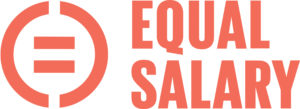When the Global Gender Gap Report was first published by the World Economic Forum in 2006, the focus on the disparity between gender within society came into the fore. Government policy makers across the world were finally benchmarked on how well they divided resources and opportunities among their male and female populations.
In the 16 years since that first report, you would have thought that the conversation would have been laid to rest. Whilst ground has been made, we all know that the conversation is as important today as it ever was.
A 2021 publication by the European Commission states that the EU gender pay gap resides at 14.1%. In other words, women earn 86 cents for every €1 earnt by a man. The publication goes on to highlight that the long-term implications of lower pay, fewer opportunities for career progression and more career breaks due to childcare responsibilities will have a far greater impact on women’s finances in retirement. Having less money to save and invest will mean that women have a 30.1% pension gap compared to men.
It goes without saying that there needs to be a seismic shift in attitudes towards women’s role in the workplace if the cycle of inequality is ever to be shut down.
The pay gap is one aspect in a much larger narrative surrounding gender inequality. Whilst laws surrounding gender discrimination are there to protect women, there is still work to do by employers to eradicate the habitual bias which can be prevalent in the workplace.
In an article published on Forbes, Bryan Robinson Ph.D. writes about instances of gender discrimination in US hospitals, despite laws and institutional policies being there to ‘protect’ female employees. The real-life cases discussed in the article are shocking, no less because such instances happen around the world on a daily basis…even in 2022.
Astonishingly, 72% of victims of sexual discrimination do not lodge formal complaints against their perpetrators for fear of reprisals from their employers, according to a survey by CareerBuilder.
So, what does this mean?
The reality is that where gender bias remains unchecked, nothing will change.
We all know that stereotypes are harmful and limit a truly inclusive society. The OHCHR succinctly put it that gender stereotypes are harmful when they limit “women’s and men’s capacity to develop their personal abilities, pursue their professional careers and/or make choices about their lives.”
The result of bias at play during the COVID-19 pandemic has seen the gap widen. In the EU, the unemployment rate among women rose by 1.1% compared to 0.7% for men. Where women did retain jobs, many were forced to reduce hours to facilitate caregiving responsibilities. The International Labour Organization analysed monthly wages across 28 European countries and found that women on average saw a 8.1% decline in wages in the second quarter of 2020, compared to a 5.4% decline for men.
The effects of gender bias are not only profound on female career progression, it also impacts mental health, relationships and physical health. Depression, anxiety and burnout are not uncommon in work cultures where a woman’s contribution is undervalued. Postnatal depression is more common where a mother-to-be experiences gender bias at work – the effects of which can have a devastating impact on long term relationships, confidence and resilience.
A study by Bocconi University’s Department of Management and Technology found that 80% of jobs are communicated informally and that these communications are often “riddled with gender bias”. So even if fragile mental health is not a factor for a working mother, the conflicting needs of carer/career means that women often miss out on the opportunities to network and build relationships with colleagues in informal settings.
For male leaders, they may not consider a female colleague for a project or role because it is assumed that they would be unwilling to take on extra responsibility – removing the choice for women to make the decision for themselves.
The knock on effect of this is that women are less likely to be promoted into positions of influence and be able to drive forward policies of gender parity. At the start of 2020, women held 38% of management positions, compared to 62% of male managers and the 2020 Fortune 500 list showed that there were only 37 female CEOs, compared to 463 males CEOs.
Only by levelling the playing field for recruitment, attributing contribution and having a ‘safe’ culture where women can voice concerns will the dominance of gender bias be eroded in the future.
So, what are your human resources priorities this year?



